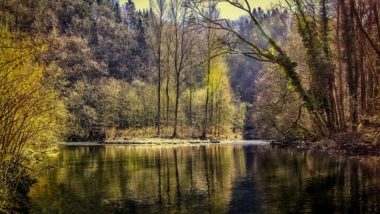New Delhi, April 23: For the first time in India, the government has conducted the first-ever census of water bodies. The census provided a comprehensive inventory of India's water resources, including natural and man-made water bodies like ponds, tanks, lakes, and more, and to collect data on the encroachment of water bodies. The census highlighted disparities between rural and urban areas and varying levels of encroachment and revealed crucial insights into the country's water resources. India Conducts Successful Trial of BMD Interceptor Missile.
About 2,424,540 water bodies have been enumerated in the country by the Ministry of Jal Shakti, out of which 97.1 per cent are in rural areas and only 2.9 per cent are in urban areas. The top five states in terms of a number of water bodies are West Bengal, Uttar Pradesh, Andhra Pradesh, Odisha and Assam -- which constitute around 63 per cent of the total water bodies in the country. PM Narendra Modi Hails Work Under Mission Amrit Sarovar, Says It's Infusing New Energy in 'Amrit Kaal' Resolves.
The top five States in terms of the number of water bodies in urban areas are West Bengal, Tamil Nadu, Kerala, Uttar Pradesh and Tripura, whereas in rural areas, top five States are West Bengal, Uttar Pradesh, Andhra Pradesh, Odisha and Assam. 59.5 per cent of water bodies are ponds, followed by tanks (15.7 per cent), reservoirs (12.1 per cent), Water conservation schemes/percolation tanks/check dams (9.3 per cent), lakes (0.9 per cent) and others (2.5 per cent).
It was found that 55.2 per cent of water bodies are owned by private entities whereas 44.8 per cent of water bodies are in the domain of public ownership.
(This is an unedited and auto-generated story from Syndicated News feed, LatestLY Staff may not have modified or edited the content body)













 Quickly
Quickly





















